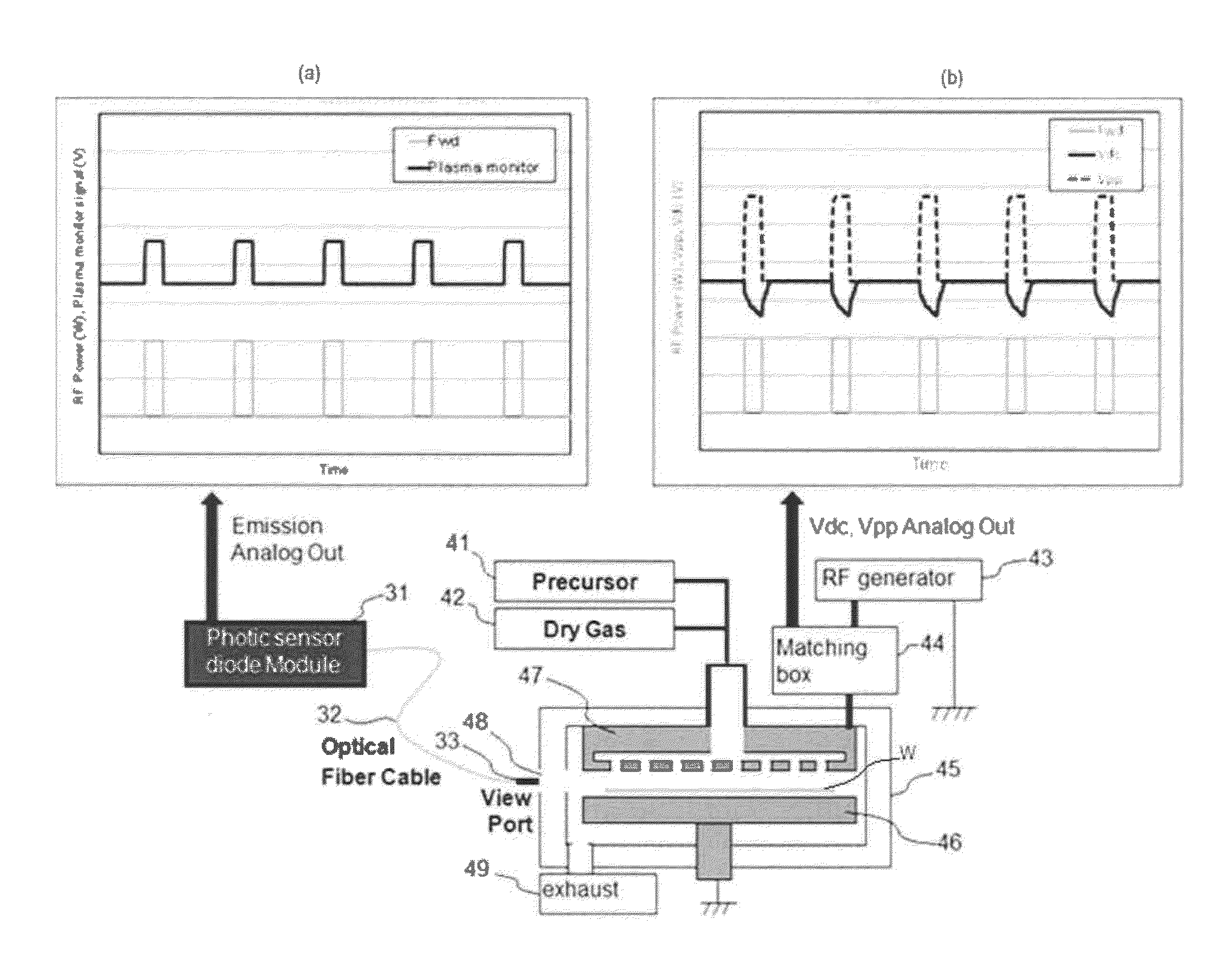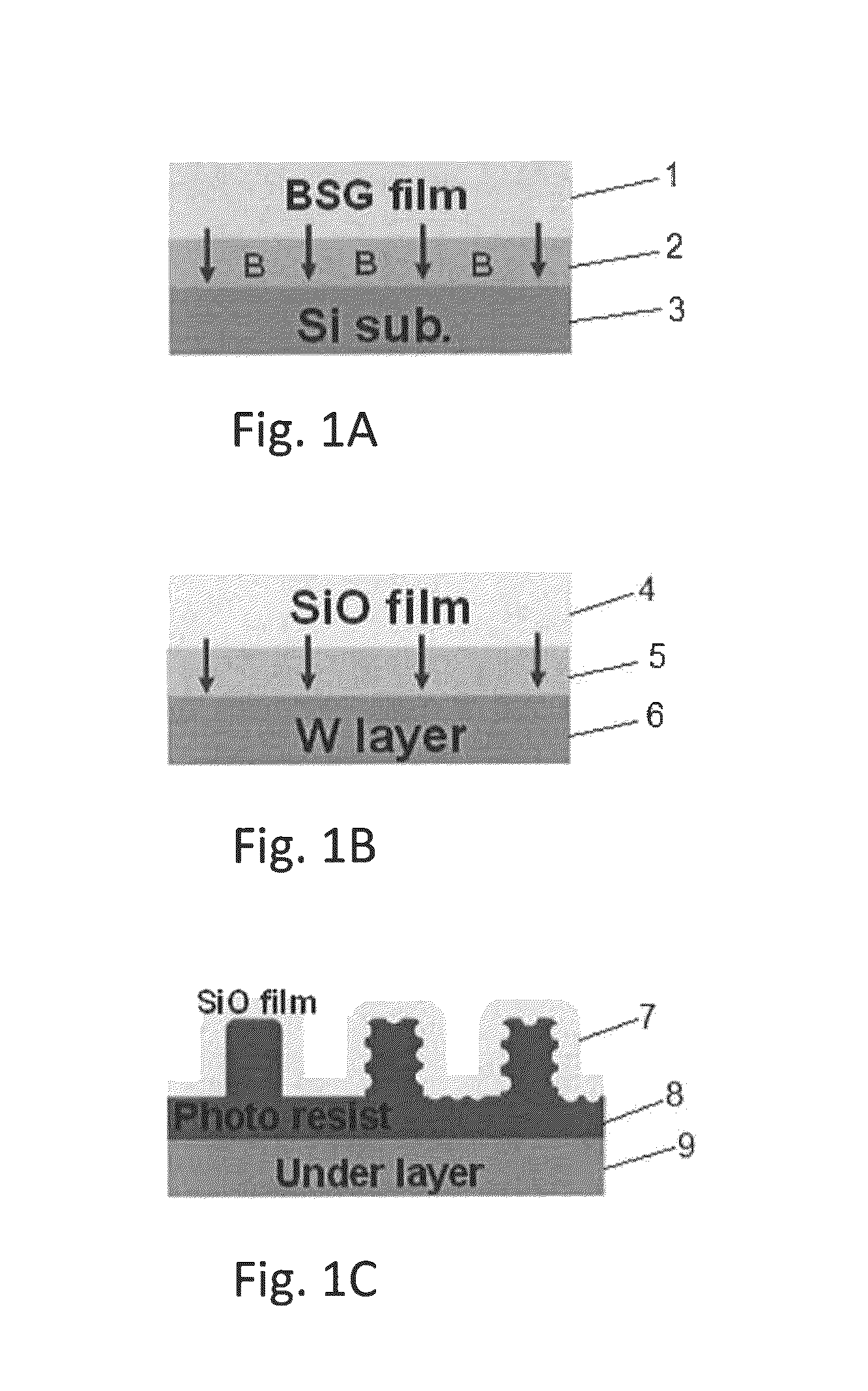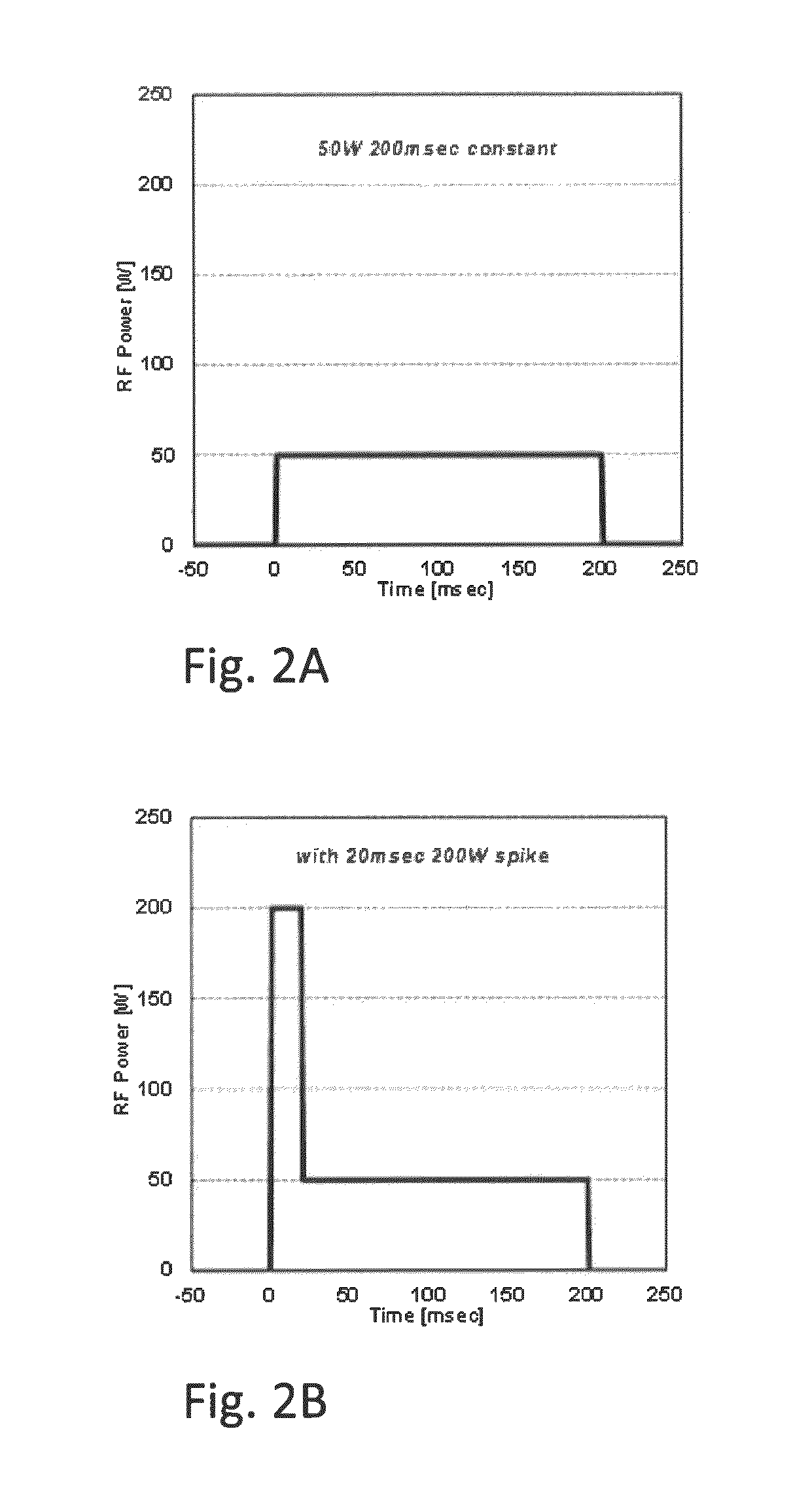Method for stabilizing plasma ignition
a plasma ignition and stabilizing technology, applied in the field of stabilizing plasma ignition, can solve the problems of high rf power, inability to stabilize plasma ignition, so as to reduce the failure rate of ignition
- Summary
- Abstract
- Description
- Claims
- Application Information
AI Technical Summary
Benefits of technology
Problems solved by technology
Method used
Image
Examples
examples
[0057]A semiconductor substrate (300 mm in diameter) was loaded onto a susceptor having a diameter of 325 mm of an apparatus illustrated in FIG. 4 for PEALD of borosilicate glass (BSG), and a film of BSG was deposited on the substrate under the conditions as follows:
[0058]PEALD for BSG:
[0059]Precursor: BDEAS, TEOB
[0060]Precursor inflow pressure: 400 Pa
[0061]Substrate temperature: 300° C.
[0062]Carrier gas flow: 2.0 SLM (continuous)
[0063]Reactant gas flow: 0.5 SLM (continuous)
[0064]Precursor supply time per cycle: 0.3 seconds
[0065]Purge time after precursor pulse: 1.0 seconds
[0066]RF frequency: 13.56 MHz
[0067]RF Plasma exciting time per cycle: 0.2 seconds
[0068]Purge time after RF application cycle: 0.1 seconds
[0069]Each cycle of RF power application was controlled based on FIG. 2B using a program executing the sequences illustrated in FIGS. 10 and 11 under the conditions shown in Table 2 below. Under the respective conditions, a plasma ignition failure ratio (a ratio of the number of ...
PUM
 Login to View More
Login to View More Abstract
Description
Claims
Application Information
 Login to View More
Login to View More - R&D
- Intellectual Property
- Life Sciences
- Materials
- Tech Scout
- Unparalleled Data Quality
- Higher Quality Content
- 60% Fewer Hallucinations
Browse by: Latest US Patents, China's latest patents, Technical Efficacy Thesaurus, Application Domain, Technology Topic, Popular Technical Reports.
© 2025 PatSnap. All rights reserved.Legal|Privacy policy|Modern Slavery Act Transparency Statement|Sitemap|About US| Contact US: help@patsnap.com



